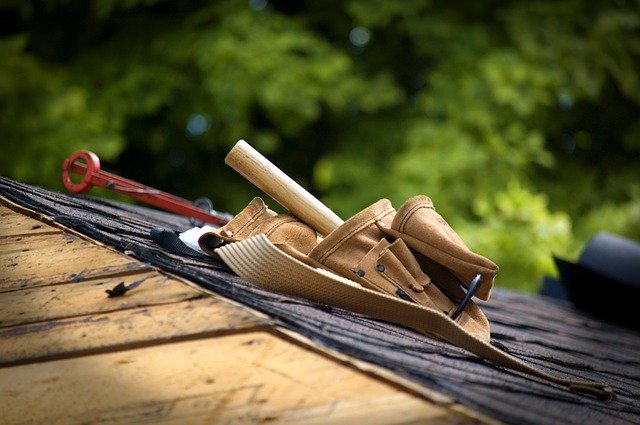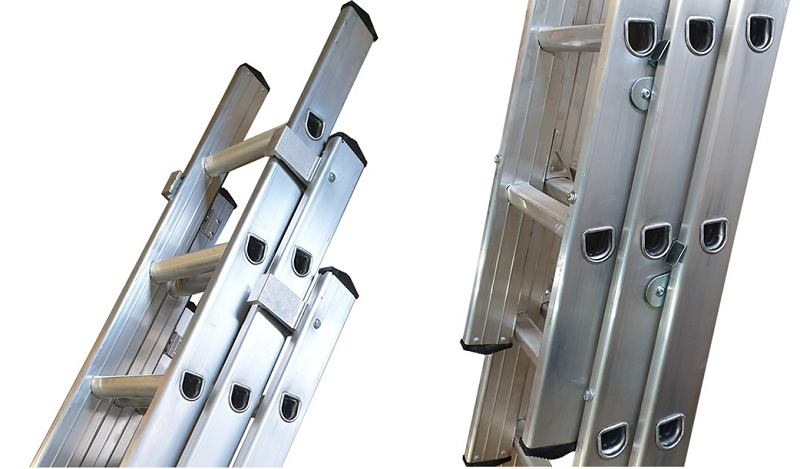
When it comes to staying safe on a ladder - whether you're climbing up it, working on it or climbing down - there are certain things that you need to do to ensure you minimise the risk of injury and accidents so that you are safe at all times.
If you're not aware of these things, you can find out in our blogs here:
How to Climb a Ladder Safely > How to Use a Step Ladder Safely >
In both of those posts, we talk about the ways that you can stay safe whilst using a ladder and list various points that you can follow. Included here is the way which you carry and hold the specific tools needed to complete the task at hand. Carrying tools whilst ascending and descending a ladder is clearly a safety hazard and should be avoided at all costs unless you have the equipment to do so; such as a tool belt.
Having a tool belt, however, doesn't automatically make carrying tools up a ladder safe. You need to know the correct way to organise and wear it to ensure your tools do not fall whilst climbing up or down the ladder, potentially injuring yourself or others that may be working or moving around you. For those of you who don't know the right way to organise and wear your tool belt, we are here to help! This blog focuses on the correct measures you need to take when carrying tools up a ladder.
So, what are you waiting for? Read on to find out more...
More...

If you own an extension ladder but you need to complete a task at a low height, it can be tempting to think about taking your extension ladder apart to get the job done. However, using the fly section of your extension ladder on its own can create a serious health and safety risk!
For the most part, extension ladders on have safety steps at the very base of the ladder, this is because the fly section is not intended for use as an individual ladder on its own. Without safety feet, the fly section of the ladder is likely to slip out from underneath you leading to an accidental and potentially life-threatening fall.
Use your ladder as it was intended
We've discussed how to use an extension ladder in lots of detail already here on Ladder UK Direct, but we wanted to remind you of one of the key points. Before you use your ladder you should inspect it to make sure it's fit for use. If it's been dismantled into 2 or 3 separate sections - it's no longer safe for use! Always use your ladder as it was intended to be used to minimise the risk of injury.
What are my other options?
If you need a ladder to complete a job at a low height, there are plenty of options for you to choose from. So, before you start taking your extension ladder apart, take a look at some of these ladders:
- Single Section Ladders - If you want a single section ladder with suitable safety feet, this is the way to go. Choose either lightweight aluminium or non-conductive fibreglass.
- Step Ladders - For added stability, or to work in a space without a supporting wall, choose a step ladder. We offer everything from platform steps to tilt and push warehouse steps.
- Roof Ladders - If you were planning to put a single section of your extension ladder against your house to access the roof, we'd recommend a roof ladder as an alternative. With a hooked end, these ladders provide the ultimate grip while you work on the roof.
To reiterate - you should NEVER take your extension ladders apart. ALWAYS use your ladder in the way it was intended or seek an appropriate alternative! If you have any questions about using your extension ladder, drop us an email - sales@laddersukdirect.co.uk.

Working with ladders on uneven ground can be really challenging. Here at Ladders UK Direct, we'd always recommend using your ladder on flat ground where possible, but we understand that sometimes this simply isn't an option. If you find yourself having to use a ladder on uneven ground, you should do whatever you can to make the ground even before you start.
More...

When using a step ladder, it is very important not only to ensure that the ladder itself is undamaged and in full working order, but that you position it correctly. By doing so, you will be able to climb up the ladder and complete the task at hand safely, confident that your step ladder will not give way and cause a potentially serious accident.
In case you're not sure how to position a step ladder, we will run through each step below, as well as the correct processes to carry out before setting up your step ladder and whilst using your step ladder.
More...

Using a ladder in cold and wet weather conditions is nobody's idea of fun. However, some people like builders and scaffolders are required to work outside - whatever the weather. There are a few things you can do to help make using a ladder in the rain safer and more comfortable. So, if you're someone who often finds yourself using a ladder in the rain, just keep reading.
More...

 Ladders
Ladders  Step Ladders
Step Ladders  Loft Ladders
Loft Ladders  Scaffold Towers
Scaffold Towers 








